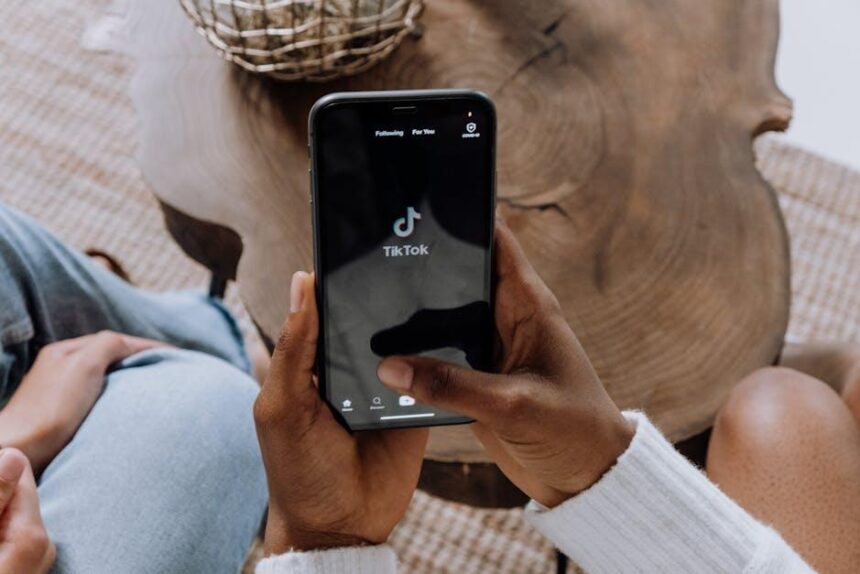In an age where screens dominate our daily lives, managing screen time for children has become more crucial than ever. As parents navigate the delicate balance between allowing access to digital learning tools and protecting their children from excessive screen exposure, mastering screen time limits on the iPhone emerges as a vital skill. This article will guide you through practical steps to set and control screen time limits effectively, empowering you to foster healthier habits for your kids while harnessing the benefits of technology. Join us as we explore simple yet effective strategies to regain control over your family’s screen time today.
Understanding the Importance of Screen Time Management for Children
In today’s digital age, managing screen time is essential for fostering healthy habits in children. With the pervasive use of smartphones, especially iPhones, understanding how to set appropriate limits can significantly impact your child’s physical and mental well-being.
Why Screen Time Management Matters
Balanced screen time is crucial for several reasons:
- Physical Health: Excessive screen time can lead to sedentary behavior, contributing to obesity. Encouraging breaks for physical activity helps combat this issue.
- Mental Well-Being: Overexposure to screens has been linked to anxiety and depression in children. Setting limits can help reduce stress and improve mood.
- Sleep Quality: The blue light emitted by screens interferes with sleep patterns. Establishing a screen-free bedtime routine promotes better sleep hygiene.
- Social Skills Development: Face-to-face interactions are vital for developing social skills. Limiting screen time encourages children to engage in real-world interactions.
Recognizing Healthy Screen Time Limits
Establishing age-appropriate screen time limits can help maintain a balance. The American Academy of Pediatrics provides guidelines that you can adapt to your family’s lifestyle:
| Age Group | Recommended Daily Screen Time |
|---|---|
| Under 18 months | No screen time |
| 18-24 months | Quality programming with adult co-viewing |
| 2-5 years | 1 hour of high-quality programming |
| 6 years and older | Consistent limits, ensuring time for physical activity |
Practical Tips for Managing Screen Time
Once you recognize the importance of screen time management, consider implementing the following strategies:
- Set Clear Rules: Define specific screen time limits and adhere to them consistently.
- Use Built-in Features: Utilize the iPhone’s built-in settings like Screen Time to monitor usage and set boundaries.
- Create Tech-Free Zones: Designate areas in your home, like the dining room, where screens are not allowed.
- Encourage Alternative Activities: Foster interests in hobbies and outdoor play to naturally reduce screen time.
By prioritizing screen time management, you can help your children develop healthier habits, live active lives, and enhance their overall well-being.

Exploring iPhone Features to Set Effective Usage Limits
Setting effective usage limits on an iPhone requires a combination of built-in features and tailored settings. Here’s how you can guide your children in developing healthy device habits while ensuring they remain engaged creatively and socially.
- Screen Time Settings: Use the Screen Time feature to monitor and control the amount of time your child spends on apps and games. This feature allows you to set limits by app category or specific apps, ensuring they are not exceeding the intended use.
- App Limits: Create specific app limits to encourage a balanced usage of their favorite applications. For instance, if your child loves gaming, you can allocate only an hour daily to that category.
- Downtime: Schedule Downtime in which only certain apps are accessible, promoting off-screen activities during specific hours, such as family time or homework sessions.
- Content & Privacy Restrictions: Set restrictions on content to ensure a safe browsing experience. You can limit access to explicit content, block certain apps, or restrict in-app purchases, making the iPhone experience safer.
- Family Sharing: Utilize Family Sharing to monitor your children’s activity. This allows you to receive weekly reports about their usage and adjust limits as necessary.
- Encouraging Alternatives: Alongside screen time management, consider promoting alternative activities like reading, sports, or other hobbies that don’t rely on screen time. Engage them in these activities to foster a well-rounded lifestyle.
| Feature | Description |
|---|---|
| Screen Time | Tracks usage and allows you to set daily limits per app. |
| App Limits | Specific time restrictions on individual apps or categories. |
| Downtime | Limits app usage during set hours to encourage breaks. |
| Content Restrictions | Blocks inappropriate content and restricts purchases. |
| Family Sharing | Monitor usage and receive reports on children’s device habits. |
For consistent reinforcement, encourage your kids to participate in discussions about their usage patterns. This not only fosters awareness but also cultivates their ability to self-regulate in the future.

Engaging Kids in Screen Time Discussions and Agreements
Having open conversations about screen time with your kids is essential for fostering a healthy relationship with technology. Engaging them in these discussions allows them to express their thoughts and preferences while understanding the boundaries you’re establishing.
Here are several strategies to make these discussions effective and engaging:
- Invite Participation: Encourage your children to share their feelings about screen time. Ask them what they like about their favorite apps or games and let them express any frustrations they might have with restrictions.
- Explain the Reasons: Clearly outline why limiting screen time is important. Discuss the benefits of outdoor play, reading, and family interactions, emphasizing how these activities contribute to their overall well-being.
- Set Goals Together: Work with your kids to set realistic and achievable goals for their screen time. Allow them to suggest limits that they feel comfortable with, promoting a sense of ownership.
- Be Flexible and Open to Adjustments: Let your kids know that screen time agreements can be revisited and adjusted based on their behavior and maturity. This flexibility shows them that you value their input and growth.
- Use Visual Aids: Create a screen time schedule together. A visual representation can help them understand the balance between screen time and other activities. Consider using a chart or calendar they can customize.
- Incorporate Technology Use: Make technology part of the solution! Use apps designed for managing screen time, allowing kids to track their usage and rewards when they meet their goals.
- Discuss the Dangers: Talk openly about online dangers, such as cyberbullying and inappropriate content, helping them understand the importance of safe internet usage.
For a clear understanding of the agreements you establish, create a simple table that outlines the screen time limits agreed upon:
| Activity | Daily Limit |
|---|---|
| Educational Apps | 1 hour |
| Games | 1 hour |
| Social Media | 30 minutes |
| Video Streaming | 1 hour |
By engaging your children in screen time discussions, you not only set effective limits but also empower them to make responsible decisions about their technology use. This teamwork can lead to a more harmonious family environment and healthier habits.

Creating a Balanced Digital Lifestyle for Your Family
involves setting healthy boundaries on screen time while ensuring that technology enriches your family life rather than detracting from it. Here are some strategies to help you manage digital consumption effectively:
- Establish Consistent Screen Time Limits: Design clear rules regarding daily screen time. For instance, the American Academy of Pediatrics suggests that children aged 2 to 5 have no more than one hour of high-quality programming per day. Consider using built-in features on your iPhone to set daily limits to help enforce these rules.
- Encourage Quality Over Quantity: Focus on content that is educational and engaging. Use apps and programs that foster learning and creativity, such as educational games or art apps, to make screen time productive.
- Family Screen Time: Create opportunities for family engagement by selecting shows or games that everyone can enjoy together. This not only helps you bond as a family but also promotes healthy discussions about content and its impacts.
- Technology-Free Zones: Designate areas in your home, such as the dining room or bedrooms, as technology-free zones. This encourages family conversation and interaction, leading to stronger relationships.
- Model Healthy Usage: Demonstrate balanced digital habits by limiting your own screen time. Children often mimic adult behavior, so showing them how to enjoy technology responsibly can influence their habits positively.
- Utilize Apps for Monitoring: Use parental control apps available on iPhones to monitor usage and set limits. This ensures your children are accessing appropriate content while also giving you peace of mind.
| Age Group | Recommended Screen Time | Suggested Activities |
|---|---|---|
| 0-18 Months | Avoid screen time, except for video chatting | None |
| 2-5 Years | No more than 1 hour of high-quality programming | Educational apps, short videos |
| 6 Years and Up | Consistent limits based on family preferences | Interactive games, learning platforms |
By implementing these strategies, families can maintain a healthy balance between screen time and real-life interactions. This approach not only nurtures emotional well-being but also fosters better communication and stronger connections overall.

To Conclude
As we conclude our exploration of mastering screen time limits for kids on the iPhone, it’s essential to remember that technology, while a formidable tool for learning and entertainment, should be balanced with real-world experiences. By setting thoughtful boundaries, you empower your children to develop healthy habits that include both digital engagement and offline activities. Embrace this approach as a way to foster responsibility, curiosity, and creativity in your young ones, ensuring that their screens enhance rather than dominate their lives. With these tools and insights in hand, you’re well-equipped to navigate the digital landscape together, fostering a positive relationship with technology. Here’s to a future where screen time becomes a meaningful part of their growth and development!













